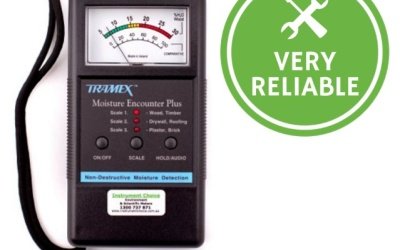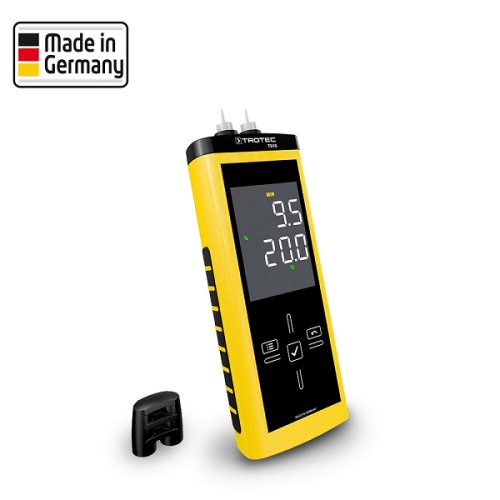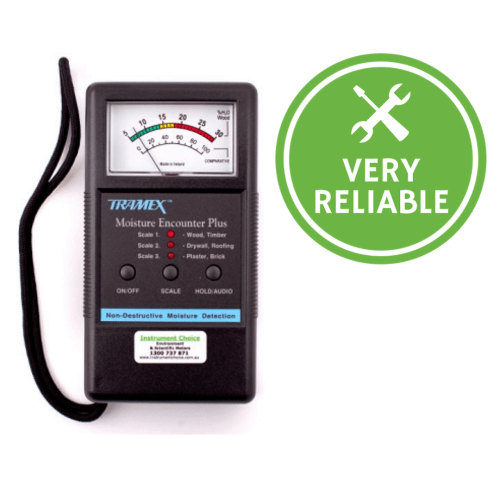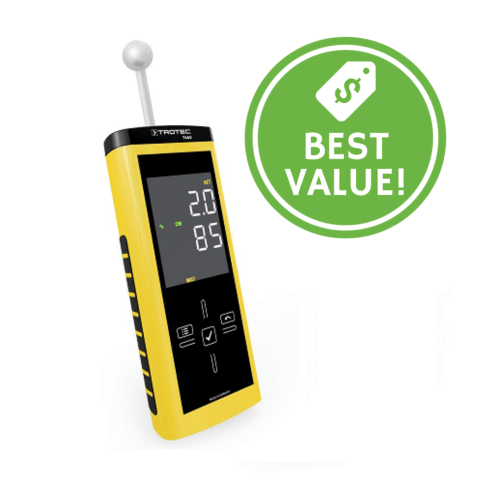Types Of Building Moisture Meters

Covering poured concrete? Laying timber flooring? Painting? Building with timber? What do all these tasks have in common?
They rely on certain moisture levels to perform the task properly. With a moisture meter, you can remove the risk and guesswork from these tasks. In this article, we will outline the two main types of building moisture meters and explain the benefits of use.
About Building Moisture Meters
Moisture meters are extremely useful and increasingly popular tools in the building and manufacturing industries. There are two main types of building moisture meters available:
- Pin Moisture Meters
- Non-Destructive Moisture Meters
Pin Moisture Meters
Pin moisture meters take measurements by inserting two pins into a surface. Each pin acts as an electrode and takes a reading by measuring the electrical resistance between the two pins. Water conducts electricity, so where moisture in any material is low, there will be a high amount of resistance. Where water content is high, resistance will reduce. Pin moisture meters convert resistance and express it as a percentage.
Pin meters work in two main ways; some moisture meters will have different settings for different materials, such as wood, concrete or plasterboard. Other meters are calibrated to a standard and will make use of correction charts to aid users when calculating moisture levels.
Pin moisture meter leave marks in the materials measured for moisture. Therefore, they are not suited to some applications. One of the best applications for these devices is measuring the underside of timber flooring, timber framing, joists, or drywalls.
Top Pin Moisture Meter Models
Moisture Meter for Wood & Building Materials 
Key features:
The 0560-6060 moisture meter displays moisture readings in terms of percentage by weight using stored material characteristic curves.
The illuminated display with hold function makes for easy result reading.
Applications: Designed to measure varieties of wood, cement screed, concrete, plaster, mortar, and brick.
Specifications: Penetration Depth: 4-5mm
Trotec T510 - Material Moisture Meter 
Key features: The device has a colour high-resolution display made of scratch-resistant glass. The high contrast display of measured values means results can be seen even under intense light.
Able to measure wood and other building materials including anhydrite and cement screed, drywall and flooring.
Applications: The T510 is a professional hand-held measuring device for the exact determination of wood and material moisture content according to the resistance measuring method.
Specifications: Penetration Depth: 10mm
Non-Destructive Moisture Meters
Non-destructive moisture meters measure the moisture content of an item using an electromagnetic field, which can penetrate the material you wish to measure for moisture. The field is affected by the amount of moisture present and, the meter converts this phenomenon into a reading.
The best applications of non-destructive moisture meters are where the markings left by a pin meter are not acceptable and where it is impossible to get readings from a pin meter (e.g., under hard surfaces like tiles).
Non-destructive moisture meters create relative and comparison readings. Some styles of non-destructive meters allow you to chart a map of moisture over a particular area. Best used for dry concrete, timber floors, cabinetry, and painted walls.
Moisture Encounter Plus Meter 
Features:
The moisture encounter plus is one of the most popular non-destructive moisture inspection tools available on Instrument Choice.
Tramex has released its ‘Moisture Mapping App’ to allow you to Map and present your results in visual form.
Applications: Easily measure wood, timber, drywall, roofing, plastic, and brick - all without causing damage.
Specifications: Signal Penetration: Up to 30mm
T660 Material Moisture Measuring Device 
Features:
The T660 is a professional hand-held measuring device for the quick, non-destructive determination of moisture distributions in near-surface areas.
View moisture readings and recall minimum, maximum, and average measurements on the high-resolution colour display.
Applications: Great for use on materials such as wood, anhydrite and cement screed, drywall, and flooring.
Specifications: Signal Penetration: Up to 40mm
Building moisture meters are becoming an increasingly common instrument in many builders' toolboxes. They take the risk and guesswork out of moisture measurement.
You can browse the full range of building moisture meters here.
Need more information on a particular product or want to know more about building moisture meters? Speak to one of our Scientists. We’re here to help! Call 1300 737 871 or email [email protected]
Also interesting
Are you looking to determine Brix, specific gravity, salinity, moisture, or serum protein within a substance? Atago manufacturers refractometers for all these parameters and much, much more.
This article will take you on a guided tour of the six main varieties of refractometers produced by Atago, from small optical meters to meters for professional and industrial use.

An anemometer is a device used to measure wind speed for a variety of applications, including for sporting events and HVAC system troubleshooting and monitoring.
Finding the right anemometer for your specific needs can often be an arduous task. To help make things easier, this article outlines four main types of anemometers, provides some product examples, along with recommended applications.

